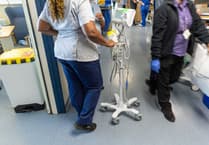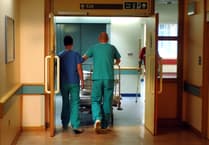While I understand and appreciate the frustration many may have with the outcome of the Farnham Infrastructure Programme so far – as summarised in the headline Some solution! in last week’s paper – the dream of a traffic-free town centre is far from being over, as implied.
At the meeting of Surrey County Council’s cabinet that was held on Tuesday, there was a recommendation that £17.5 million was spent on improvements to the public realm in Farnham town centre, of which SCC would be funding £14 million themselves.
The balance was being requested from Waverley Borough Council (WBC) and Farnham Town Council, and a contribution from Section 106 agreements from planning permissions already granted.
This is one of the largest infrastructure expenditures proposed in Surrey, with many other bids for funding from other parts of the county not receiving anything at all.
If accepted, this recommendation will then be subject to final approval by SCC’s full council on July 11.
In addition, approval was also being sought to improve the Water Lane junction at a cost of £505,000, mainly funded by CIL payments that have been received by WBC.
While we would all like to see an even greater amount being spent in Farnham, this does represent the most significant expenditure ever by SCC at a time when all local authorities are facing financial difficulties, especially given the current high rate of cost inflation.
This proposed investment to improve the public realm in Farnham is a real achievement, reflecting the close working relationship that has been developed between the three councils working together.
Approval of this expenditure will then allow contracts to be invited to allow work to actually start on designing and implementing improvements in Downing Street, Castle Street and The Borough, as proposed in the FIP.
It should, however, be clearly understood that none of these works will prevent the eventual creation of a traffic-free town centre.
As an initial first step, restriction of traffic to buses, taxis, bicycles and delivery vehicles along East Street between The Royal Deer junction and Dogflud Way will still be possible, although cannot be achieved immediately since this needs Woolmead Road being made two way, which would require potentially very expensive land acquisition at its narrow pinch point with Bear Lane.
To make Farnham town centre completely car free would, however, require a drastic change in public attitudes towards the use of private cars.
Investment to encourage public transport – Farnham’s bus service is very basic and essentially used only as a means of last resort – as well as investing in active travel (cycling and walking) will not itself be sufficient.
In other parts of the UK, like Oxford, introduction of low-traffic neighbourhoods, where restrictions are placed on use of private cars, have met with strong public resistance, with claims the public have a fundamental human right to be allowed to use their cars without any restrictions.
Implementation of the FIP proposals and the financial commitment being recommended by SCC should, therefore, be seen as taking that all-important first step towards creating a traffic free town centre and not an end in itself.
By Cllr David Beaman
Farnham Town Council representative on the FIP Board
Highfield Close, Farnham




